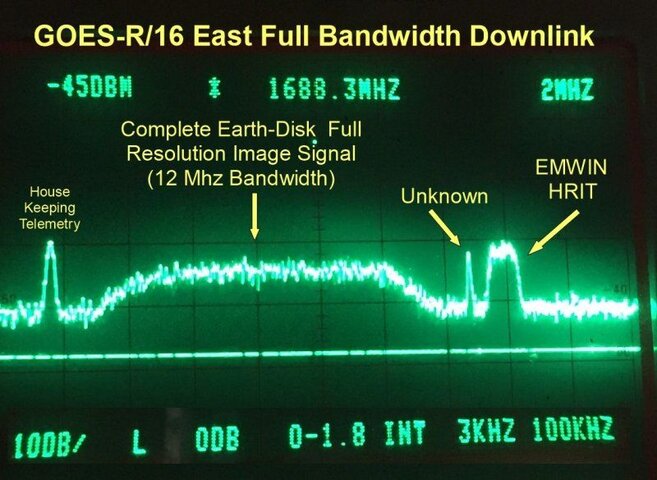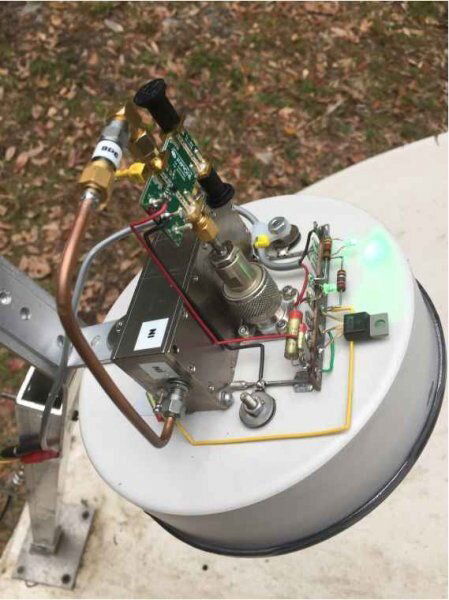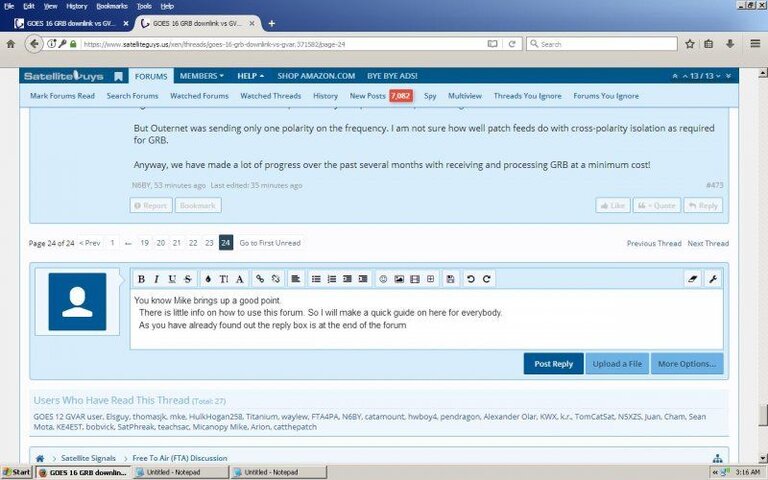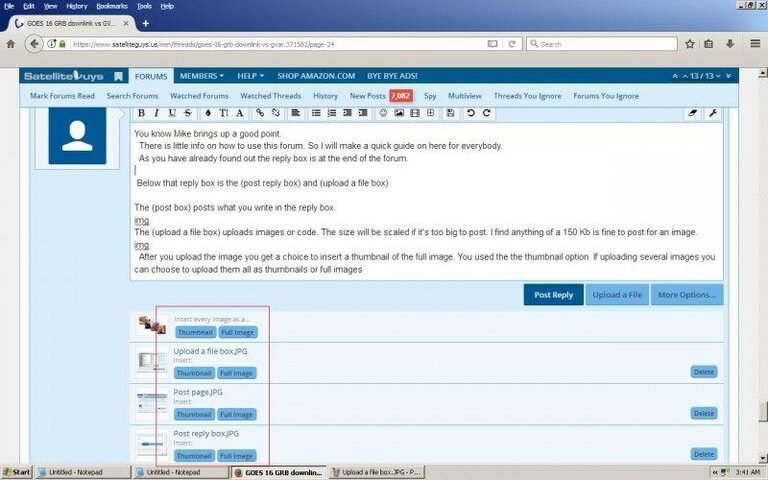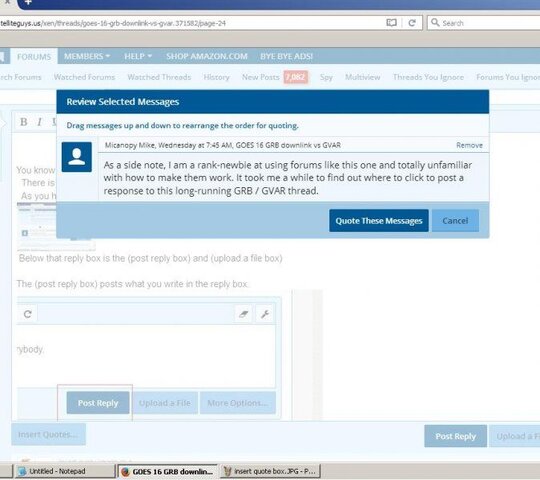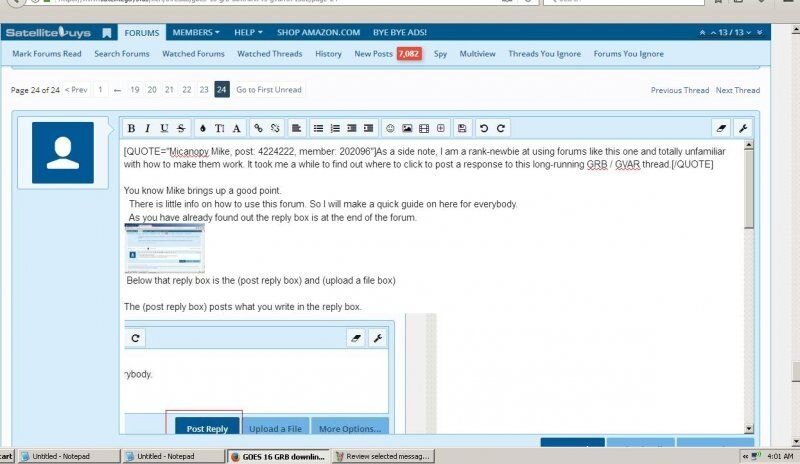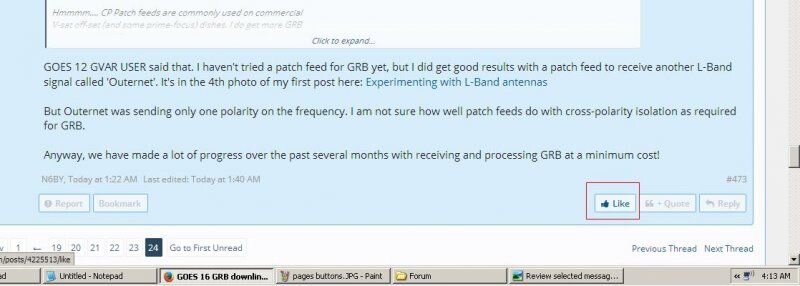Hi Mike,
Tim here GOES 12 GVAR User
Ya, GVAR stations at that time were very expensive. The single user would have put out quite a bit to set up one. Let alone the TV Xmitter to share the data.
And so are GRB stations but we here are changing that so that cost is much more manageable. Also with the data age the cost of this stuff is coming down in a big way.
Mike consider this a ragchew (non hams term "Discussion") on GOES GVAR and GRB, I have allowed some content of NOAAPORT and a little on EMWIN but we are keeping this on GRB and GVAR as there is a lot to take in with this for any new user.
We have been exchanging ideas and designs, theory and facts. Trying to see what works and don't.
Before there wasn't too much on GRB as the single user couldn't afford to setup such an advanced earth station. But between several forums, discussions and trial and error we have made it possible to set one up.
Since you have received GVAR you will be familiar with the basics and dish antennas. That's a big start.
Besides the format change for GVAR to GRB so has the data rate. From 2.11 Mbps to 32 Mbps. This is important as the computer processing this will have to be able to handle it.
What the focus for me has been here so far is receiving the data streams and making NetCDF files, as that is what is sent from the spacecraft.
These files are the full resolution of the ABI and the files are large. As were channel 1 of the GVAR imager. There are 3 on the ABI and that's just scratching the surface.
As with anybody coming on here I recommend that you read through the forum first as there are now 24 pages/ 473 posts to it and I have to go back every so often to research what was said.
Mike, in the first page of the forum there's the GOES R Pug. It's a manual of the GOES R GRB downlink. Found in post #2 of the forum.
In there you you find all the details about the GRB downlink, since you have expertise in this you should be able to follow what NOAA talks about in there and the details.
Brett covers the HRIT well. I may at some time start a post on HRIT as there are many things the have come along there.
The reason I mentioned the patch antenna is: The research I have done states that a patch antenna will under or not evenly illuminate a dish therefore resulting in and less then ideal antenna performance.
It was proven by W1GHZ that the waveguide feed was indeed the best to be used with dishes at or greater the 20 wavelengths in dia. Those guys at 1.2 Ghz have made many feeds and setups to make the most of what they use.
There were several cases that they ran simulations and did the actual test to confirm the results.
A patch antenna may work with an offset dish but I can't confirm that.
But if you have it try it. It will need to be circular polarized to work. I posted in the forum how to make a wavegide dual probe feed to receive 1 of the streams.
KWX currently uses that feed.
As Brett also stated you will need both streams to get the RGB visible image. The RGB image is made by combining the red channel, blue channel and the green channel together. As I stated above the RGB image is 3 visible images combined. This is a very large image when done. But it does look great.
You will be looking at a Min 10' dish to get both streams there in Fl. And the bigger the dish the more margin you will have. If you could get both on an 8' dish you won't have much margin. Unlike GVAR that if you get errors in the bits the image will get speckles in it.
In GRB if you lose the sync to the signal you lose that image as the receiver disregards any data after loss. This is all due to how the data is sent via DVB-S2. So signal margin is critical even though there is error correction designed into the streams.
Don't feel that you're getting carried away, this is a discussion.



